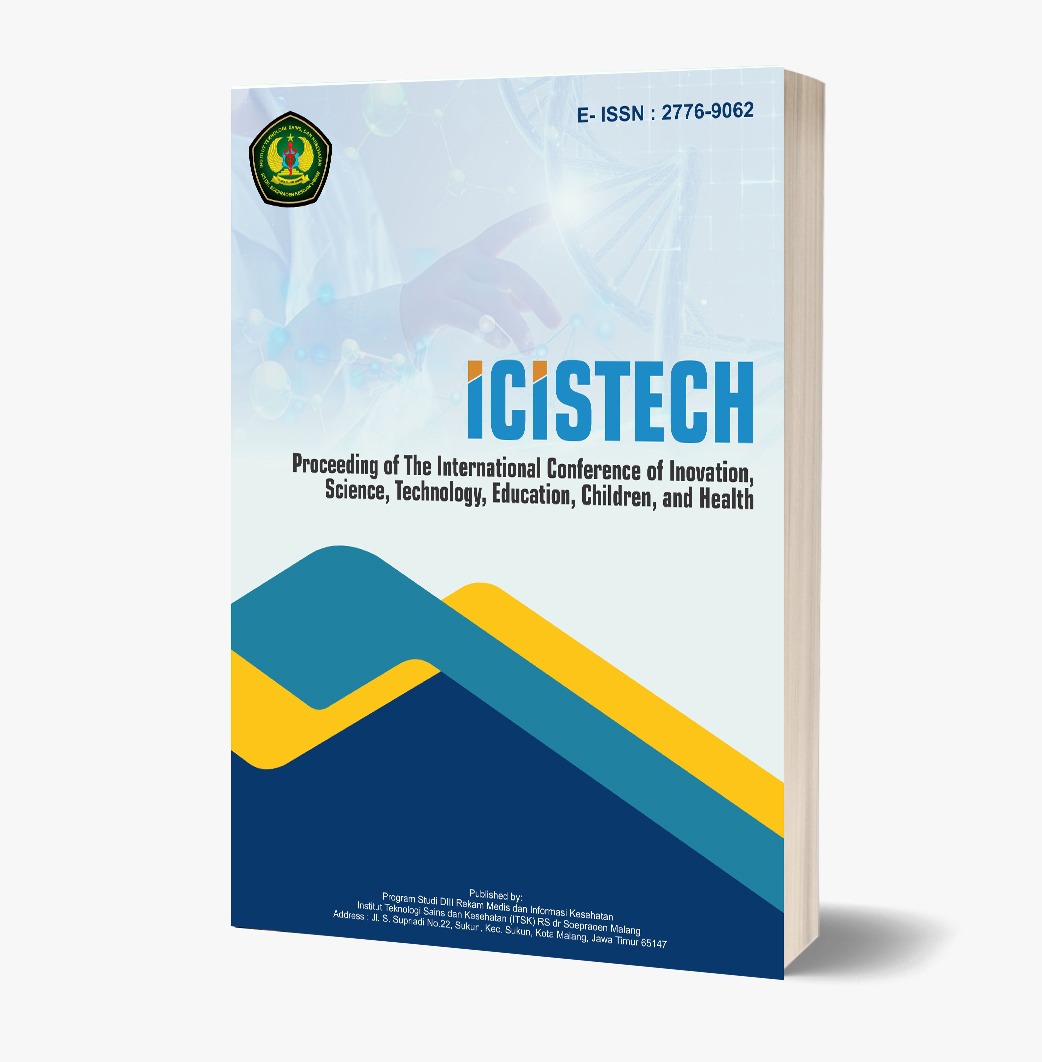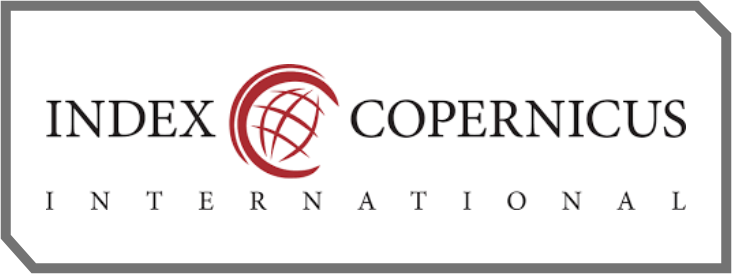Age Vs Awarness : A Cross-Sectional Insight Into Emesis Gravidarum Among Early Pregnancy
DOI:
https://doi.org/10.62951/icistech.v5i1.210Keywords:
Age, Emesis, Knowledge, PregnancyAbstract
Emesis gravidarum (EG) is a common condition experienced by pregnant women, characterized by nausea and vomiting that can negatively impact the health of both the mother and the fetus. Although often considered a normal part of pregnancy, EG can significantly impact a mother's quality of life. Age factors are thought to have an effect on the level of maternal knowledge about this condition, with older mothers tending to have a better understanding than younger mothers. This study used a quantitative design with a cross-sectional approach. A sample of 30 pregnant women in the first trimester was taken using the purposive sampling technique. Data were collected using questionnaires and analyzed using Pearson correlation tests. 60% of respondents were multigravida, and 40% of respondents (100%) were between the ages of 20 and 35. Seventy percent of people throw up more than three times a day. With an average score of 73.40 (on a scale of 50 to 90), Mother's level of knowledge showed variances in comprehension. The normality test revealed that the knowledge and age data were normally distributed. Since there was no discernible association between the mother's age and her degree of knowledge (r = 0.139, p = 0.465) according to the Pearson correlation test, other variables like education and information availability might be more important factors influencing knowledge. The age of the first-trimester pregnant women and their level of EG knowledge did not significantly correlate. Consequently, comprehensive health education is essential to enhance pregnant women's comprehension of EG, irrespective of age considerations.
References
Alvionita, V., Erviany, N., Angraini, R., Nurfitri, N., & Ramadhani, A. A. (2023). Faktor yang berhubungan dengan pengetahuan ibu hamil tentang deteksi risiko tinggi kehamilan. Jurnal Sehat Mandiri, 18(2), 70-80. https://doi.org/10.33761/jsm.v18i2.1047
Amarlini, R. (2020). Hubungan pengetahuan dan sikap ibu hamil dengan kejadian mual muntah pada kehamilan trimester pertama. Jurnal Surya Medika (JSM), 6(1), 70-76. https://doi.org/10.33084/jsm.v6i1.1620
Bradshaw, A., & Carter, C. G. (2022). An exploratory study of expectant mothers' knowledge, attitudes, and beliefs about infant vaccination. Qualitative Health Communication, 1(2). https://doi.org/10.7146/qhc.v1i2.130396
Dewi, N. R., Sri Wahyuni, M. S., & Hidayana. (2022). Knowledge and attitude of pregnant women related to hyperemesis gravidarum at Jagong Health Center, Jagong Jeget District, Central Aceh Regency in 2021. Bioscientia Medicina: Journal of Biomedicine and Translational Research, 6(4), 1613-1616. https://doi.org/10.37275/bsm.v6i4.483
Hoven, V. (2018). The relationship between knowledge with pregnant women's behavior in the first semester about emesis gravidarum at Mangasa Health Center, Makassar. Journal of Multimedia Services Convergent with Art, Humanities, and Sociology, 8(10), 1.
Kiftia, M., Rizkia, M., & Ardhia, D. (2020). Since January 2020 Elsevier has created a COVID-19 resource centre with free information in English and Mandarin on the novel coronavirus COVID-19. Elsevier Connect. https://doi.org/10.1016/j.elsevier.com
Kim, Y., Kim, R., Soh, J., & Choi, K. (2013). GAMBARAN tingkat pengetahuan ibu hamil tentang emesis gravidarum berdasarkan usia dan tingkat pendidikan di BPS Bidan Delima Tegalharjo Glenmore Banyuwangi tahun. 18(5), 458-465.
Liu, C., Zhao, G., Qiao, D., Wang, L., He, Y., Zhao, M., Fan, Y., & Jiang, E. (2022). Emerging progress in nausea and vomiting of pregnancy and hyperemesis gravidarum: Challenges and opportunities. Frontiers in Medicine, 8(January), 1-17. https://doi.org/10.3389/fmed.2021.809270
Luqmanasari, E., Karya, S., & Kediri, H. (2018). Description of knowledge women pregnant on first trimester about hyperemesis gravidarum in regional health center Tiron multiplication district of Kediri. Indonesian Journal of Nutritional Epidemiology and Reproductive, 2(1), 1-10.
Marnovy, R. A., Bahriyah, F., Wulandhari, Y., & Arlis, I. (2024). Pengaruh usia dengan risiko komplikasi kehamilan di wilayah kerja puskesmas Pekan Heran tahun 2024. 3, 83-86.
Munawaroh, S., Pratiwi, L. L., & Soetrisno, S. (2022). Hyperemesis gravidarum and maternal age under 20 years: A cross-sectional study. PLACENTUM: Jurnal Ilmiah Kesehatan Dan Aplikasinya, 10(3), 163. https://doi.org/10.20961/placentum.v10i3.56917
Pushpa, D., Sangeetha, X., Roy, S. M., & Devikala, K. (2025). Effectiveness of antenatal education on knowledge and practice of maternal nutrition among antenatal women. International Journal of Reproductive Contraception Obstetrics and Gynecology, 14(1), 94-100. https://doi.org/10.18203/2320-1770.ijrcog20243931
Sipa Suhraeni, K., Wuna Sri, K., & Ano, L. (2023). Hubungan umur ibu dengan kejadian komplikasi persalinan di puskesmas Kolono Kabupaten Konawe Selatan. Jurnal Pelita Sains Kesehatan, 3(5), 29-37.
Sipayung, R., Sinurat, L., & Silitonga, E. (2022). Hubungan pengetahuan ibu hamil trimester I dengan sikap dalam mengatasi emesis gravidarum di klinik Lena Barus Binjai. Jurnal Teknologi Kesehatan Dan Ilmu Sosial (TEKESNOS), 4(1), 179-186.
Study, C., & Erbil, N. (2024). The effect of perceived social support on pregnancy stress: A descriptive and cross-sectional study. March.
Susana Aguilera, P., & Peter Soothill, M. D. (2014). Antenatal care. Revista Medica Clinica Las Condes, 25(6). https://doi.org/10.1016/S0716-8640(14)70634-0
Thaha, R. M., Anwar, M., & Maria, I. L. (2021). Effects of access to information on health literacy in pregnant women. Open Access Macedonian Journal of Medical Sciences, 9, 1122-1126. https://doi.org/10.3889/oamjms.2021.7421
Utaminingtyas, F., & Pebrianthy, L. (2020). Gambaran pengetahuan ibu hamil trimester I tentang emesis gravidarum. Bali Health Published Journal, 2(1), 37-43. https://doi.org/10.47859/bhpj.v2i1.190
van der Minnen, L. M., Grooten, I. J., Dean, C., Trovik, J., & Painter, R. C. (2025). The impact and management of hyperemesis gravidarum: Current and future perspectives. International Journal of Gynecology and Obstetrics, March, 1-9. https://doi.org/10.1002/ijgo.70165
Wahyu, A. (2023). Knowledge of trimester I pregnant women about emesis gravidarum. Jurnal Ilmu Kesehatan Dan Gizi, 1(1), 44-49. https://doi.org/10.59841/jumkes.v1i1.15
Downloads
Published
How to Cite
Issue
Section
License
Copyright (c) 2025 Proceeding of The International Conference of Inovation, Science, Technology, Education, Children, and Health

This work is licensed under a Creative Commons Attribution-ShareAlike 4.0 International License.













